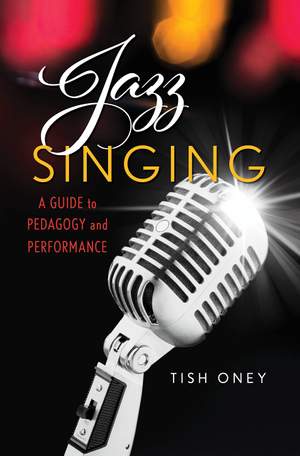Contents
- Introduction
- Voice pedagogy has long been a keen interest and scholarly focus of mine. Jazz singing has been my professional niche since my teen years. Combining these has become an irresistible, irreversible necessity. Why adopt a composite method? I recognize that e
- Chapter 1: Vocal Anatomy
- All professional singers, regardless of style of music performed, are behooved to fully understand the anatomy of the organ through which they make their livelihood. Most jazz voice textbooks omit this necessary information. This chapter presents the anat
- Chapter 2: Vocal Health and Hygiene
- How should a singer care for the voice? This chapter aims to present tips for vocal preservation, healthy speech, do's and don'ts for maintaining vocal health, and various pathological conditions that affect singers (polyps, nodules, hemorrhages, cysts, v
- Chapter 3: Posture and Alignment
- This chapter presents tenets of correct posture and body alignment that optimize a singer's tone production. Fundamentals of spinal, jaw, and neck alignment, and skeletal balance will be discussed.
- Chapter 4: The Physics of Singing
- This chapter discusses Myoelastic Aerodynamic Phonation which is the process of translating breath energy into sound through the correct coordination of the vocal mechanism.
- Chapter 5: Managing the Breath
- The quality of a singer's breath management determines the extent to which the sung phrase is adequately energized and supported. This chapter discusses the anatomy and function of the breathing mechanism, and presents exercises that will enhance the jazz
- Chapter 6: Phonation, Articulation and Resonance
- This chapter aims to educate the reader regarding the adduction of the vocal folds, the action of the tongue and jaw in correctly articulating consonants in a jazz style, the shaping of vowels and the coordination of various resonance chambers. The author
- Chapter 7: Jazz Stylization and Ornamentation
- Implementation of jazz style and ornamentation will often help a novice jazz singer sound immediately more authentic. This chapter explores various musical techniques used by jazz vocalists to evoke jazz style, including ornaments (smears, doits, falls, s
- Chapter 8: Vocal Improvisation
- A. Melodic Embellishment
- B. Scat Singing
- C. Text-Based Improvisation
- There are several styles of vocal improvisation that today's jazz vocalists can explore. This chapter introduces those various approaches to improvisation including melodic embellishment, scat syllables, text-based improvisation, improvisation around the
- Chapter 9: Phrasing
- The art of phrasing a jazz standard hails back to the work of Lester Young. Young taught Billie Holiday the fine touches of back-phrasing, and singers have since taken their lead from Holiday's inventive approach. Singers must be aware of both the musical
- Chapter 10: Microphone Technique
- The mic is half the jazz singer's instrument. How one wields its power can make or break a budding vocalist. This chapter deals with how to hold and maneuver the mic, how to deliver consonants, how to navigate range issues, how to manage dynamics, and how
- Chapter 11: Blend, Balance and Authentic Style in the Vocal Jazz Ensemble
- All choral ensembles are faced with the challenges of blend, balance, and stylistic authenticity. Vocal jazz ensembles face these same challenges, but often with closer harmonies and fewer members. Since each member of a vocal jazz ensemble is also genera
- Chapter 12: Dalcroze Eurhythmics in the Voice Studio and Choral Rehearsal
- A. Solfege
- B. Improvisation
- C. Rhythm
- Dalcroze Eurhythmics is a method of exploring music from a kinesthetic standpoint, originally founded by Jaques Dalcroze. Dalcroze exercises comprise three primary areas: Solfege, Improvisation, and Rhythm. Exploring these musical areas using kinesthetic
- Chapter 13: Applying Instrumental Methods to Jazz Voice
- A. The Singer's Use of Scales
- B. Thirds, Sevenths, and Extensions
- C. Root Motion
- D. Merging analytical and creative approaches
- This chapter hones in on the theoretical background a jazz singer needs to authentically perform this style of music. A thorough knowledge of scales (major, minor, modal, chromatic, pentatonic, blues, bebop, etc.) provides a wealth of material that singer
- Chapter 14: Psychological Considerations
- Singing is a highly personal experience, and the sharing of one's voice represents an intensely vulnerable activity, particularly when presenting it before an audience. Singers are therefore subject to a wide range of psychological states and influences.
- Chapter 15: Artistry-Putting it all Together
- The coordination of body, breath, mind, and heart is where the key to artistry lies. The true artist must perfect his/her vocal technique, energize the tone with breath, facilitate mental focus and express the text and music with sincerity. This chapter d



